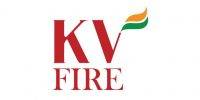 Building fire safety comprises of a ‘package’ which incorporates construction methods, mechanical and electrical devices, management practice and organised human response tailored to reduce the impact of fire upon the occupants, the building, its contents, the attending firefighters and any neighbouring property. In the context of building fire safety, fire impact is considered to be any threat to life and property caused by heat or smoke and may include adverse environmental impact from toxic products stored on the premises.
Building fire safety comprises of a ‘package’ which incorporates construction methods, mechanical and electrical devices, management practice and organised human response tailored to reduce the impact of fire upon the occupants, the building, its contents, the attending firefighters and any neighbouring property. In the context of building fire safety, fire impact is considered to be any threat to life and property caused by heat or smoke and may include adverse environmental impact from toxic products stored on the premises.
Building fire safety cannot be defined as a single system, it relies upon a group of sub systems to form a complete package. More often than not, if one of the sub systems is removed, the whole package will collapse and the occupants within the building will face an unacceptable risk in the event of outbreak of fire. For simplicity, the package can be broken down into nine principle sub systems, comprising:
- Occupant training and education
- Means of escape from the building
- Ignition potential
- Fire load
- Compartmentation and structural fire resistance
- Fire fighting systems
- Fire detection, alarm and communication systems
- Smoke management systems
- Fire service response.
Occupant training and education
An essential part of any building fire safety system (probably the most important part) is training and education of the occupants in matters of fire safety. Every conceivable device that technology can devise can be placed in a building but if the occupants are ignorant of what a fire alarm sounds like, what are safe and unsafe work practices or where the exits are, then the devices will not achieve a fire safe building. All too often occupant training, fire drills and safe work practices (all required by the Work Health and Safety Act 2012) are overlooked or given only superficial attention. A management plan, addressing all of these facets, together with what to do after a fire has been extinguished to minimise its consequential effect, is very necessary if the overall fire safety system is to be effective.
The law requires that all workplaces provide for the safe and rapid evacuation of persons in the event of an emergency. The emergency may be a fire, gas leak, hazardous material leak (e.g. a dangerous chemical), bomb threat or some other type of crisis situation.
Where, because of its construction (e.g. compartmentation), a building affords some internal protection from the hazard, initial evacuation may only require the removal of occupants away from the immediate danger (room or floor) to adjacent safe areas (rooms or floors).
A fire emergency procedure should include the following:
- Alert others of the fire
- Ensure the immediate safety of anyone near the fire
- Call the fire service
- Fight the fire if safe to do so **101
- Evacuate the area.
** Even if an automatic alarm has been instigated, a ‘101’ emergency telephone call should still be made to confirm receipt of alarm and to give further details.
The following guidelines may be used to establish an evacuation procedure for the workplace:
- Draw a map which shows all exits from the building. Give each employee a copy of this map and display copies of it in prominent locations.
- Establish assembly (marshalling) points outside the building and inform employees of their locations.
- Establish who, during an evacuation, will search which area (if safe to do so) to ensure that no one is left in the building. Ensure the attending fire service is informed which areas (if any) have not been searched and cleared.
- Conduct evacuation drills regularly. All building occupants should participate.
- All employees should be familiar with the sounds and locations of any fire alarm or emergency communication systems.
- Any visitor or contractor working on the premises should be made aware of the emergency procedures and be told what to do and where to go in the event of an emergency.
- No one should enter/re-enter the building until the fire service give the all clear.
- Involve employees who have hearing, vision or physical impairments in evacuation planning. Make provision for anyone who needs help in escaping and include these provisions in all drills.
- Work with fire service personnel to keep your workplace fire emergency plan up-to-date.
Means of escape from the Building
This is an essential part of the fire safety system. A safe, illuminated, well identified way out of the building is required in order that the building occupants can escape a fire (or other) emergency. Often more than one escape route is required so that occupants have an alternative exit if one cannot be reached because of smoke or fire. These exits must be kept clear at all times. Storage of materials in exits is a common hazard and security problems are often overcome by illegally locking fire escape doors which places the lives of the building occupants at risk if a fire occurs.
Accessibility of emergency exits
 Emergency exits are required in buildings so that occupants can quickly escape from the building at time of fire or other emergency.
Emergency exits are required in buildings so that occupants can quickly escape from the building at time of fire or other emergency.
Emergency exits must be available at all times. This is a requirement of Building and Work Health and Safety Legislation. The legislation generally requires that the emergency exits can be opened by escaping building occupants without a key. Generally, the locking of an emergency exit is an offence. Should building security pose problems (e.g. in a prison), it is essential that fire and building approval authorities are aware of any management system in place to deal with these issues. Documented approval of such arrangements is paramount. Discussion with the Community Safety and Resilience Department is recommended.
It is an offence to store materials in an emergency exit, these can obstruct occupants’ access to a safe place and may, by nature of the materials stored, pose a fire threat.
Any signs or notices which provide advice about exits (location maps, signs on doors) must be maintained so that they are legible to the occupants of the building at all times. These need to be checked periodically for compliance and currency.
It is recommended that, in hotels, boarding houses and the like, a ‘you are here’ map be fixed to the back of each sole occupancy room door, showing the location of emergency exits and giving basic advice to the occupants of emergency and fire procedures applicable to that building.
Exit and emergency lighting
Emergency lighting and exit signs are provided where necessary so that occupants of the building can identify the location of exits in an emergency, even in the event of a power failure.
It is important that these facilities are maintained in good working order at all times. Regular checking of these systems is essential. All checks should be recorded and immediate steps taken to rectify any faults found.
Fire load
Fire load is a term used to describe how much combustible material is contained in a building and usually applies to the building contents. If the fire load is minimised, then fire impact will be reduced. It is the fire load and how it is arranged (e.g. furniture layout) or, in the case of a storage area, how the combustible goods are stored which determines the rate of fire growth and, hence, the rate of heat release from the burning materials. A large log chopped up into kindling wood presents the same fire load as the whole log, however, the kindling will quickly burn, releasing all its heat in a short time whereas the whole log (if it can be ignited in the first instance) will take a long time to burn and release its heat. Storing combustible materials in separate piles with a space between each pile is one way to reduce the impact of a fire in its early stages (assuming that only one pile initially catches fire). This will also initially slow down the rate of fire spread (growth) in the stored materials because the fire will need to jump from pile to pile.
‘Housekeeping’ in fire safety terms, describes practices used to avoid the dangerous build up of combustible materials in or about the premises. The term also describes the accessibility of fire exits and installed fire fighting equipment which have the potential to be obstructed by stored goods (combustible or otherwise). Piles of empty pallets, combustible off cuts, wood shavings, wrapping materials, cardboard boxes, piles of redundant paper or files, or exits blocked by stored or discarded materials is ‘poor housekeeping’. Poor housekeeping often reflects poor management procedures.
Good housekeeping practices, both indoors and outdoors, reduce the likelihood of ignition and the impact of fire by controlling the presence of fuels, obstructions and sources of ignition.
Many fires in the workplace can be prevented through effective housekeeping practices. Constant attention to housekeeping and removal of unnecessary combustibles assists greatly in lowering the inherent fire hazard.
- Some good housekeeping (hazard reduction) tips to reduce the likelihood and impact of fire, and to help occupants to quickly escape and the fire service to reach the fire include:
- Stop waste materials accumulating in the workplace.
- Store trash and other waste in covered metal containers.
- Position combustible material and rubbish containers well clear of buildings**.
- Secure metal lids to rubbish containers at all times when not in use**.
- Establish a suitable routine for the regular removal of rubbish and all unnecessary combustible material from the premises.
- Keep walkways and paths to emergency exits clear at all times.
Properly store equipment after use.
**Many buildings have been destroyed by fires which have originated in unsecured waste containers positioned too close to the building.
These practices are relatively inexpensive and uncomplicated. Well trained staff are the key to safe housekeeping methods and all employees can make significant contributions to fire safety where housekeeping is involved.
Ignition potential
Ignition potential describes the likelihood of a fire starting. There is no ignition potential in a bare room with no building services or people in it. Introduce people and you have an ignition potential, especially if the people smoke. People also make mistakes (human error). People, gas / electrical services, combustible materials, flammable liquids and tools of trade generate an ignition potential. If a room were full of all these things and the occupant was a compulsive arsonist, we would consider the ignition potential to be extreme. If we reduce the ignition potential, we reduce the risk of a fire outbreak.
Compartmentation and structural fire resistance
If the fire is contained within a room or space (known as a compartment) by the nature of its construction, its impact on other parts of the building will be minimised. Naturally the people in the compartment will need to get out before the fire effects them. A room of solid brick with no windows and a sturdy door would be a good fire compartment, because it would be difficult for the heat and smoke to escape. A room constructed of glass would be a poor fire and smoke compartment because, as the fire grows, heat would shatter the glass thus letting heat and smoke out and the fire to spread.
Compartmentation is a called a ‘passive’ system (i.e. just by being there it inhibits the spread of fire). It relies upon structural stability under fire conditions; the ability to withstand the effects of fire without collapse.
Fire fighting systems
Fire fighting systems are those which intervene in the fire growth process. Such systems can be used by trained occupants or attending firefighters and include a fire extinguisher, fire hose reel, or fire hydrant. Other systems may be automatic such as a fire sprinkler system. Automatic systems are considered to be superior, because they do not rely on people to manually operate them. Fire fighting systems are known as ‘dynamic’ systems because they do something; they actively intervene in the rate of fire growth.
The greater the extinguishing capability of the system and the earlier in the fire growth period it can be applied, the lower the fire impact, hence, the preference for sprinkler systems by most fire engineers and fire fighting professionals.
General Fire Fighting Equipment
Fire fighting systems and equipment vary depending on the age, size, use and type of building construction. A building may contain some or all of the following features:
- Fire extinguishers
- Fire hose reels
- Fire hydrant systems
- Automatic sprinkler systems.
Fire extinguishers
Fire extinguishers are provided for a ‘first attack’ fire fighting measure, generally undertaken by the occupants of the building before the fire service arrives. It is important that occupants are familiar with which extinguisher type to use on which fire.
Most fires start as a small fire and may be extinguished if the correct type and amount of extinguishing agent is applied whilst the fire is small and controllable.
The principle fire extinguisher types currently available include:
Fire extinguisher locations must be clearly identified. Extinguishers are colour coded according to the extinguishing agent.
It is the policy of the Community Safety and Resilience Department that fire extinguishers be logically grouped at exits from the building, so that occupants first go to the exit and then return to fight the fire, knowing that a safe exit lies behind them, away from the fire.
In some instances this will be at odds with the prescriptive requirements of Australian Standard AS2444 Portable fire extinguishers and fire blankets – Selection and location, which simply specifies a distance of travel to a fire extinguisher rather than their location in relation to escape paths. Blind compliance with the standard has the potential to place the fire between the occupant and the safe escape path.
Fire hose reels
Fire hose reels are provided for use by occupants as a ‘first attack’ fire fighting measure but may, in some instances, also be used by firefighters.
When stowing a fire hose reel, it is important to first attach the nozzle end to the hose reel valve, then close the hose reel valve, then open the nozzle to relieve any pressure in the wound hose, then close the nozzle. This achieves two principle objectives:
A depressurised hose and hose reel seal will last longer than if permanently pressurised.
When the hose reel is next used, the operator will be forced to turn on the isolating valve, thus charging the hose reel with pressurised water supply, before being able to drag the hose to the fire. A potential danger exists if the operator reaches the fire and finds no water is available because the hose reel valve is still closed.
Because hose reels are generally located next to an exit, in an emergency it is possible to reach a safe place simply by following the hose.
In South Australia, a unique floor mounted swivel hose guide is often employed which lays the hose at floor level, prior to being dragged by the operator. In practice for a single person, this makes withdrawal of the hose much easier than does the traditional high level swinging arm hose guide.
Fire hydrant systems
Fire hydrant systems are installed in buildings to help firefighters quickly attack the fire. Essentially, a hydrant system is a water reticulation system used to transport water in order to limit the amount of hose that firefighters have to lay, thus speeding up the fire fighting process.
Fire hydrants are for the sole use of trained firefighters (which includes factory fire fighting teams). Because of the high pressures available serious injury can occur if untrained persons attempt to operate the equipment connected to such installations.
Fire hydrant systems sometimes include ancillary parts essential to their effective operation such as pumps, tanks and fire service booster connections. These systems must be maintained and regularly tested if they are to be effective when needed.
The placement of such equipment needs to closely interface with fire service operational procedure; simply complying with deemed to satisfy code provisions is a potential recipe for disaster. For any advice regarding these systems, old or new, please ask the intended users; contact the Community Safety and Resilience Department.




















































